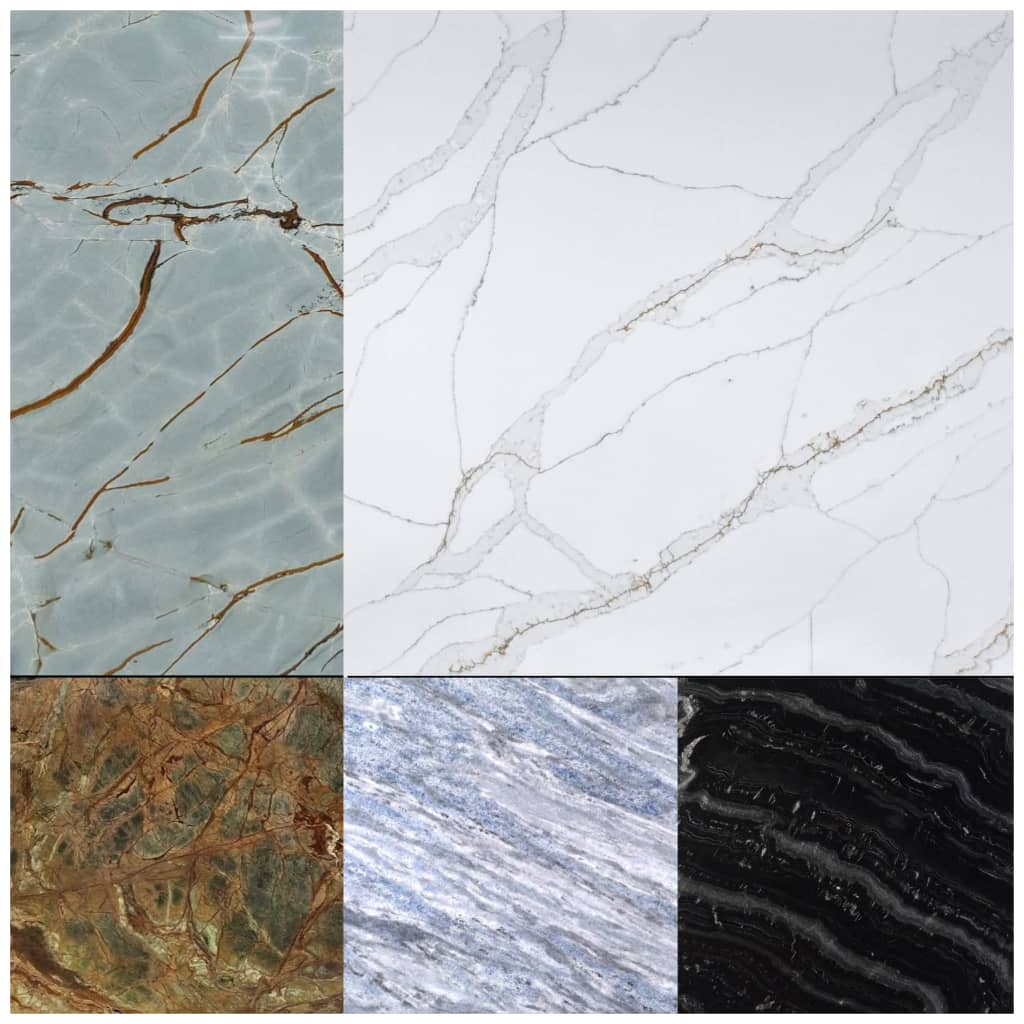Natural color in stone isn’t just a surface detail—it’s a story written deep within the earth. Every slab carries the fingerprint of the minerals that shaped it, from iron-rich reds to coppery greens and smoky grays. These colors aren’t painted on or engineered; they’re born from pressure, heat, and time. If you’ve ever stood in front of a slab and felt something stir, chances are you were responding to nature’s palette.
Natural Color in Stone: What Minerals Are Responsible?
The colors we see in stone come from trace minerals that interact with the stone’s base composition. For example:
Iron oxides create reds, oranges, and yellows. These are often found in sandstone, travertine, and some granites.
Copper can produce green and blue tones, especially in stones like malachite or turquoise.
Carbon contributes to deep blacks and grays, common in slate and basalt.
Manganese adds purples and pinks, often seen in marble and limestone.
Quartz and feldspar influence clarity and brightness, especially in lighter stones.
Even a small amount of these minerals can shift the entire look of a slab. That’s why no two pieces are exactly alike—even if they come from the same quarry.

Natural Color in Stone: Why Patterns and Shades Vary
Color isn’t just about what minerals are present—it’s also about how they’re layered, heated, and compressed over time. Veins form when mineral-rich water flows through cracks, leaving behind deposits that harden into streaks or swirls. Some stones, like quartzite, show dramatic movement because of this process.
Environmental conditions also play a role. Stones formed near volcanic activity may have more vivid colors due to intense heat and mineral saturation. Others, like limestone, develop softer tones from sedimentary layering and gentle pressure.
This variation is what makes slab selection so personal. You’re not just choosing a color—you’re choosing a moment in geological history.

Natural Color in Stone: How to Read a Slab Like a Map
When walking through a slab yard, look closely at the color shifts. A rusty streak might point to iron deposits. A greenish hue could suggest copper. The more you know about mineral behavior, the more you can “read” the slab and understand its origin.
Designers often use this knowledge to match slabs with mood or function. Warm tones can make a kitchen feel grounded and earthy. Cool tones might work better in a bathroom or entryway. But beyond aesthetics, it’s about connection—choosing a stone that speaks to the story you want to tell.
